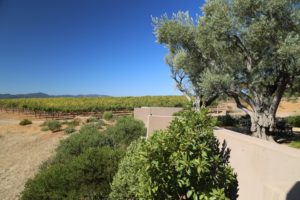
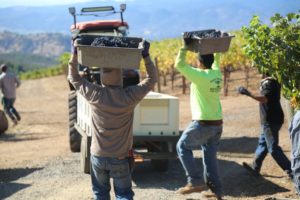 Continuum Estate was founded in 2005 and is located on Pritchard Hill in the Vaca mountains, the range that forms the eastern boundary above Napa Valley. This location was purchased in midsummer 2008 and two existing vineyard properties were combined into one large property. These included Versant founded by former architect Richard Martin and Cloudview, founded by Leighton Taylor, a former marine biologist, both of whom we met with separately to review their respective brands before the Mondavi’s purchased this land. The winery was designed by Backen, Gillam, & Kroeger Architects and opened in time for the 2013 harvest. This architectural firm has designed a number of premium wineries in Napa Valley including Harlan Estate, Futo Estate and Ovid Estate. What might be the smallest and shortest “cave portal” in all of Napa Valley is drilled a few feet in next to their tank room. Future plans call for tunneling a cave much further into the hillside.
Continuum Estate was founded in 2005 and is located on Pritchard Hill in the Vaca mountains, the range that forms the eastern boundary above Napa Valley. This location was purchased in midsummer 2008 and two existing vineyard properties were combined into one large property. These included Versant founded by former architect Richard Martin and Cloudview, founded by Leighton Taylor, a former marine biologist, both of whom we met with separately to review their respective brands before the Mondavi’s purchased this land. The winery was designed by Backen, Gillam, & Kroeger Architects and opened in time for the 2013 harvest. This architectural firm has designed a number of premium wineries in Napa Valley including Harlan Estate, Futo Estate and Ovid Estate. What might be the smallest and shortest “cave portal” in all of Napa Valley is drilled a few feet in next to their tank room. Future plans call for tunneling a cave much further into the hillside.
The winery is about 3 miles in from Sage Canyon Road, on a windy narrow steep road about 25-30 minutes from the town of St. Helena. If one stands behind Robert Mondavi Winery and looks in a straight line through the Mondavi winery tower through the crown of Opus One, one can see the Continuum property far in the distance. Binoculars would help in this regard.
While not an officially recognized sub appellation of Napa Valley, due to Chappellet Winery owning the trademark to Pritchard Hill, this area has long produced excellent wine. In fact, vines have been planted in the vicinity of Pritchard Hill since the late 1880s by Italian American vintners. Two of Napa Valley’s typically 7 recognized cult wineries are here: Bryant Family and Colgin. Other nearby premium wineries include BRION Estate, Gandona, Ovid and David Arthur. From a grape growing perspective, this neighborhood is in high demand. As one local vintner told us, “these vineyards are Oakville with altitude”.
A limited number of coveted locations above Napa Valley provide some of the best overlooks and views; this is one of them. Long Road (named after the family who purchased property here in the 1960s) and some of the private ridge top roads on and around Pritchard Hill certainly qualify in this regard. This is all hillside land; Continuum owns 172 total acres of which approximately 62 acres are currently planted to several red varieties including Cabernet Franc, Cabernet Sauvignon, Merlot and Petit Verdot categorized within 45 separate and distinctive vineyard blocks. All their vineyards grow at an elevation of between approximately 1300 and 1600 feet.
Yields are low here, usually a maximum of only 2 tons per acre. Some of the grapes are sold to other wineries. The overall property is referred to as Sage Mountain Vineyard in homage to the wild sage that grows in this part of Napa Valley.
The nutrient deficient soils here are iron rich and oxidized which produces a reddish character. Rocks are an important part of this site including massive boulders, many of which line the perimeter of the vineyards. And like other parts of Pritchard Hill, some of these boulders were just too large to move so were left in the soils.
This side of Napa Valley experiences longer sunshine hours during the growing season based on its primarily western facing slopes. And this dictates the type of surrounding vegetation. Rather than the eastern facing more shaded in the afternoon slopes of the Mayacamas mountains on the other side of the valley which are forested, these slopes are primarily covered with chapparal and are much more exposed.
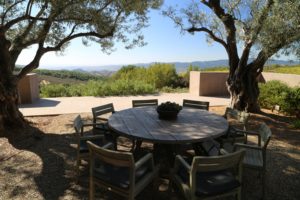
 And that is an integral distinction in part influencing the types of wines produced from both mountain ranges. One could make the argument that to produce Cabernet Sauvignon dominated wines with more freshness and vitality from the warmer (and getting warmer) slopes of Pritchard Hill, the addition of Cabernet Franc is an important character.
And that is an integral distinction in part influencing the types of wines produced from both mountain ranges. One could make the argument that to produce Cabernet Sauvignon dominated wines with more freshness and vitality from the warmer (and getting warmer) slopes of Pritchard Hill, the addition of Cabernet Franc is an important character.
Robert’s Grove is a collection of 100-year-old olive trees planted directly outside of the winery as a tribute to Robert Mondavi. These trees were 100 years old when they were planted on site in 1913 – exactly 100 years after Robert Mondavi was born and the same year the finishing touches were put on the winery. A bust in Robert’s likeness stands at one end of this grove which was originally on display at Robert Mondavi Winery.
The property is planted to over 550 olive trees (6 varieties); each year they hand harvest these and press them locally. Guests will be able to sample this olive oil during tastings. They don’t make much olive oil, so it is sold via their mailing list to current customers.
Continuum is a partnership between Tim Mondavi, his sister Marcia, and originally with Margrit Mondavi (died in 2016). The late Robert Mondavi was also a founding partner. The Mondavi family first immigrated to the United States in 1906 from the small mountain town of Sassoferrato in the province of Ancona in Italy (today, population around 7,000 people). The town is known for its ancient structures including the Rotondo Castle and Albornoz Fortress. Tim’s grandparents, Ceseare and Rosa moved west from Minnesota to California in the early 1920s. They are part of the rich viticulture history in Napa Valley and are one of Napa’s most well-respected winemaking families. For more details about their contributions to Napa Valley see our in depth notes on this site for Robert Mondavi Winery and Charles Krug.
Sassoferrato, Italy
Continuum is a tribute to their family heritage and builds upon the decades of experience they have accumulated in California and internationally. They have no plans to become a large winery, rather their efforts are focused on crafting a single limited production red wine each year.
Tim Mondavi is the winemaker for Continuum; he worked at Robert Mondavi Winery every summer until he official joined the winery full time in 1974. He helped produced the wines at Robert Mondavi Winery until 2004 when the Mondavi family sold the winery to Constellation Brands. Tim’s first official position at Robert Mondavi Winery was working in their lab for winemaker at the time, Zelma Long at age 22. Robert Mondavi Winery had only been open for 8 prior harvests but already several talented winemakers had left their mark including Warren Winiarski (1966-1968) and Miljenko Grgich (1968-1972). Both went on to have prominent careers at their own wineries.
Tim was also involved in creating the early Opus One wines including helping blend their first vintage (1979) with the help of Château Mouton Rothschild’s winemaker at the time, Lucien Sionneaux.
During our first visit to the estate, we sat down with Carissa Mondavi, Robert’s granddaughter and Tim’s daughter. She is actively involved in the day-to-day operations with Continuum, often traveling to sell the wine as well as working on some of their marketing efforts. All of her siblings have been involved with Continuum at some point during its history. Presently, Dante (Raen wines) and Chiara work for the business. Two other siblings are not directly involved including Dominic, a graphic artist and designer and Carlo, an innovator who is co-founder of Monarch Tractor – an autonomous and electric tractor company.
Chiara, Carissa, Dante and their cousin Brian founded Sentium Wine, a small brand whose inaugural vintage was the 2022 Sentium, a Mendocino County Sauvignon Blanc.
Wines
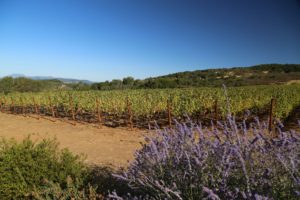
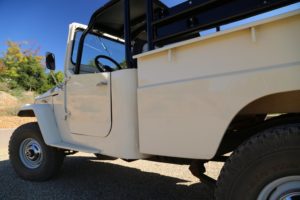 Continuum strives to be recognized as one of the world’s great wines. Their first release was in 2005 – a typical production is around 4,000 cases annually. 2008 was the first year that grapes were included from their estate property. Prior vintages were sourced from Marjorie’s Vineyard in the famed Mondavi To Kalon Vineyard in the heart of Oakville as well as from the Stags Leap District. Marjorie’s Vineyard is named in tribute to Tim and Marcia’s mother. The first vintage that included all grapes from the Continuum estate was in 2012.
Continuum strives to be recognized as one of the world’s great wines. Their first release was in 2005 – a typical production is around 4,000 cases annually. 2008 was the first year that grapes were included from their estate property. Prior vintages were sourced from Marjorie’s Vineyard in the famed Mondavi To Kalon Vineyard in the heart of Oakville as well as from the Stags Leap District. Marjorie’s Vineyard is named in tribute to Tim and Marcia’s mother. The first vintage that included all grapes from the Continuum estate was in 2012.
Each year Continuum hosts a Blessing of the Grapes when the first fruit is harvested; this tradition dates back to the early days of Robert Mondavi Winery. All the grapes are hand harvested, hand sorted and fed by gravity into varying sizes of oak or concrete tanks for fermentation. Each year the wine is aged in French oak barriques (about 2/3 new) from several premium coopers usually for a period lasting from 20 to 22 months. Following fermentation, the wines are left to age for some time on the lees before their first racking. The winery uses stainless steel tanks, but only for racking or blending. The wine is bottled unfined and unfiltered for maximum flavor and color.
Years of history and experience with producing premium wines from exceptional vineyard sources ensured the 2005 Continuum was not a typical first release. This wine sets the standard quite high for their future vintages. As Tim says, “winemaking is the art of bringing the vine to the land, the fruit to the vine, the winemaking to the fruit and ultimately the wine to the table”. The Mondavi’s recognize that great wine stays great throughout its life and balance and longevity are always the hallmarks of the Continuum wines, regardless of their age.
The 2014 Continuum reveals aromas of tobacco smoke, blackberry and a perceptible dust component that we sometimes notice in wines from Pritchard Hill. The bouquet is elegant. On the palate the wine is supple on entry showing both red and black fruit with flavors of red cherry, plum, cigar spices. Very balanced throughout, the wine finishes with dusty/earthy tannins which are fairly polished for a young mountain grown wine. This wine is about the richness of fruit that their site produces rather than about the influence of oak (both on the bouquet and the palate). This vintage is a blend of 65% Cabernet Sauvignon, 15% Cabernet Franc, 15% Petit Verdot and 5% Merlot.
We purchased a three pack of the 2011 Continuum, because Pritchard Hill was one of the best parts of Napa Valley for producing wines during this challenging vintage, but we gave all three bottles away before we even had a chance to sit down with one and write some tasting notes! We hope to taste this vintage again soon.
The 2005 Continuum is dark crimson in color with elegant aromas of fine chocolate, sweet blackberry, graphite and floral nuances including notes of rose petal. The palate is rich in flavor, layered and full bodied. A core of red and black fruit coats the palate including black cherry, currant and hints of black licorice. The mouth feel is supple, velvety soft and is anchored by well-balanced delicate tannins. This wine has the balance, structure and acidity to continue to age and evolve well over time. There have been a number of “it” wines we’ve tasted on this project, and this is definitely one of those. You know an “it” wine when you taste it; it has that special Napa Valley driven richness combined with elegance. This vintage is a blend of 58% Cabernet Sauvignon, 23% Cabernet Franc and 19% Petit Verdot.
Starting with the 2015 vintage, a higher percentage of Cabernet Franc started being put into the final blend of the Continuum bottlings. And no wine was produced commercially in 2020 due to issues with smoke taint from the Glass Fire.
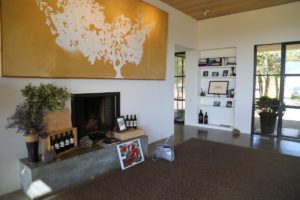
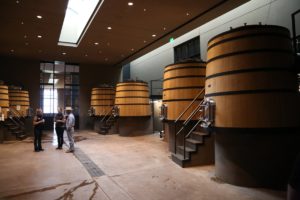 A second label called Novicium (Latin for new or fresh) typically sees a large percentage of Cabernet Franc in its blend and is produced from grapes from the younger vines. It features an image of bud break on the label. This wine is generally not promoted; however, a current release is always available for tasting at the winery. The inaugural vintage of Novicium was in 2010.
A second label called Novicium (Latin for new or fresh) typically sees a large percentage of Cabernet Franc in its blend and is produced from grapes from the younger vines. It features an image of bud break on the label. This wine is generally not promoted; however, a current release is always available for tasting at the winery. The inaugural vintage of Novicium was in 2010.
The beautiful label was designed by Chiara Mondavi as a shadow drawing. At the time, she modeled this artwork after a 25-year-old Cabernet Franc vine from Oakville that her father had planted. This painting is called “light of the vine” with the light representing the vine’s energy. If one looks carefully on the original print hanging in their hospitality center one sees a portion of the vine on the left side which is far less defined than the rest of the vine. It was a windy day while Chiara was creating the artwork and this less defined area represents leaves on the vine blowing in the breeze.
NOTE: this section of this review has been identified as needing a major update including tasting notes for current release wines. We hope to taste these sometime in 2024 or 2025.
Hospitality
The property quickly elicits words like wow and gorgeous when first time visitors arrive. Their offices and hospitality are housed in Richard Martin’s old home dating from when Versant Vineyards was located here. The pool has since been filled in. A visit is educational, relaxing and enjoyable.
Weather permitting, guests are driven around parts of the vineyard stopping at key spots including scenic lookout; there are plenty jaw dropping views to go around. Following the vineyard tour, guests will walk through parts of the winery; note its thick walls – these were purposely built to help insulate the winery during warm days. Every time we walk in here, even during harvest, we are always struck by how clean and uncluttered the space looks. The roof was also designed to catch water for use for winery operations.
Following a visit to the winery, guests will return to the house for a tasting of the current release Continuum along with a slightly older vintage. And paired with the wines are their delicious olive oil, the exceptionally enjoyable Calvestrano olives and a tasty hard and granular cheese.
Tastings are private for your party. Allow up to two hours. Expect to want to linger.
—
Currently, Continuum currently has distribution in select markets in various states as well as parts of Asia and Europe. The wines are also sold via numerous online retailers. One can also signup to become an allocation member on their website; members will be the first to receive announcements about new releases. Tastings are for mailing list members or serious wine enthusiasts.
For more information or to join their mailing list, visit: www.continuumestate.com
Winery
Winemaking
Vineyards
Hospitality






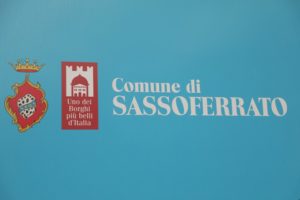

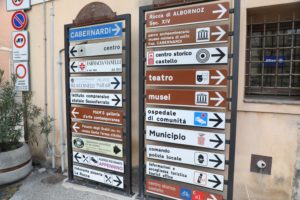

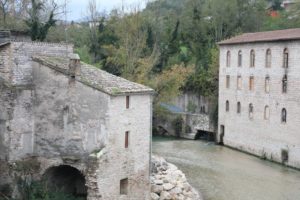
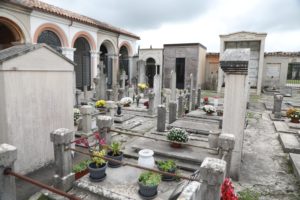
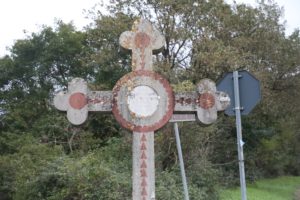

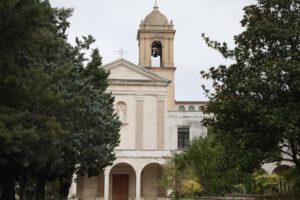
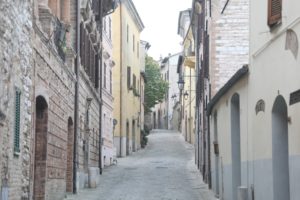

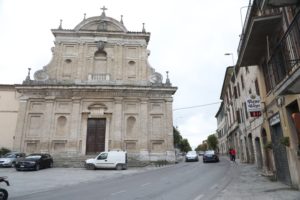
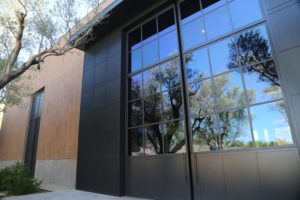
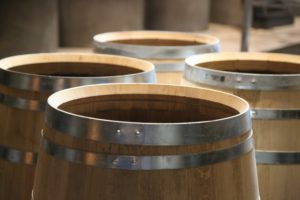
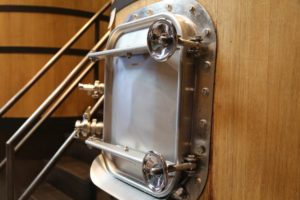
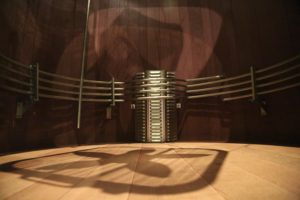
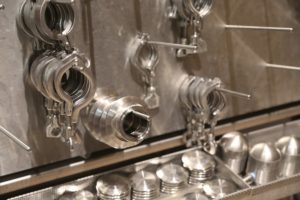
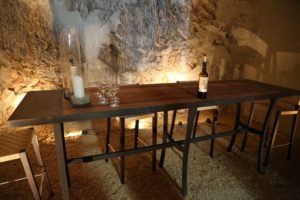
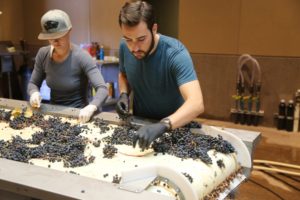
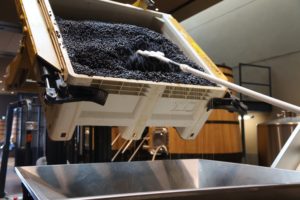
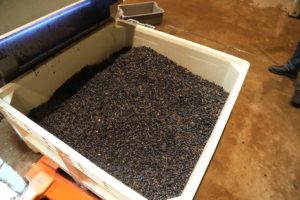
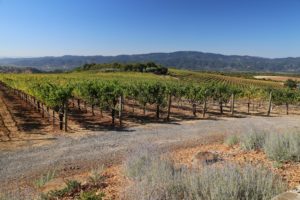
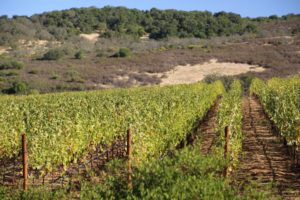
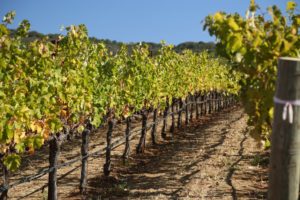
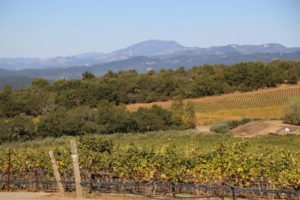
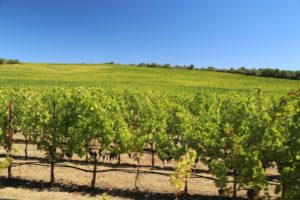
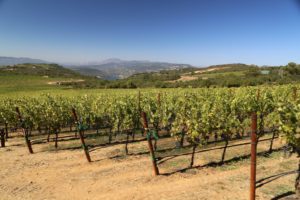
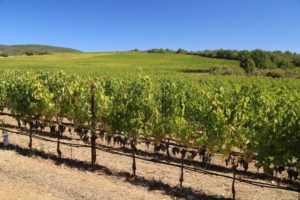
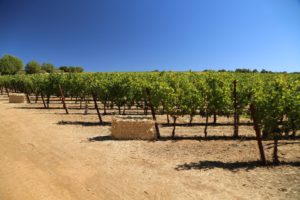
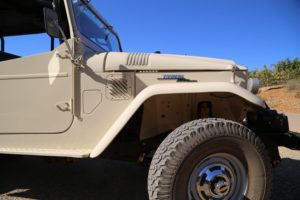
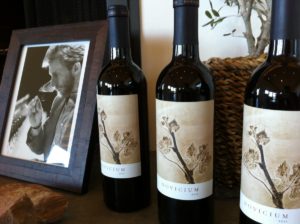
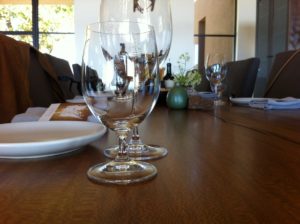
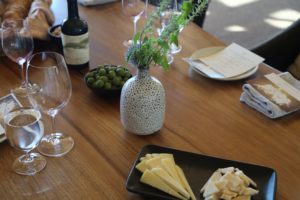
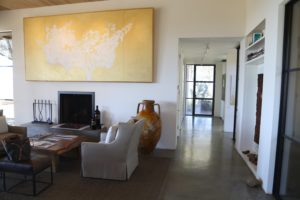
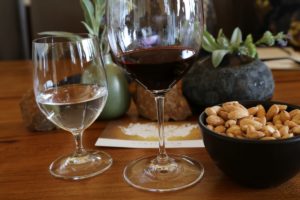
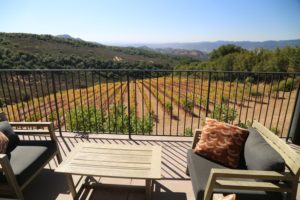
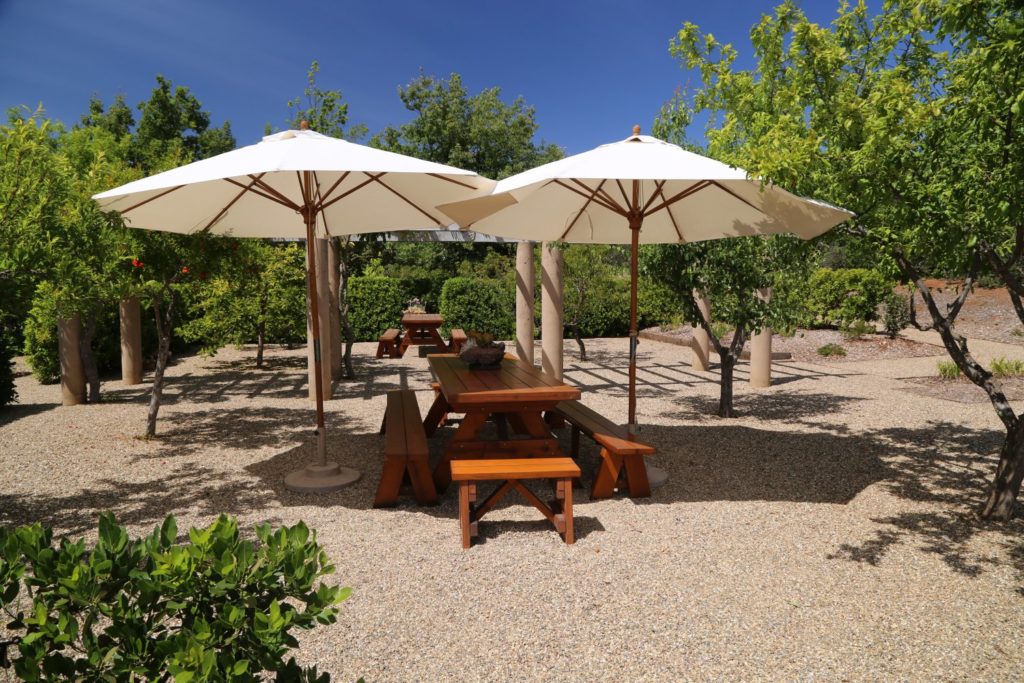
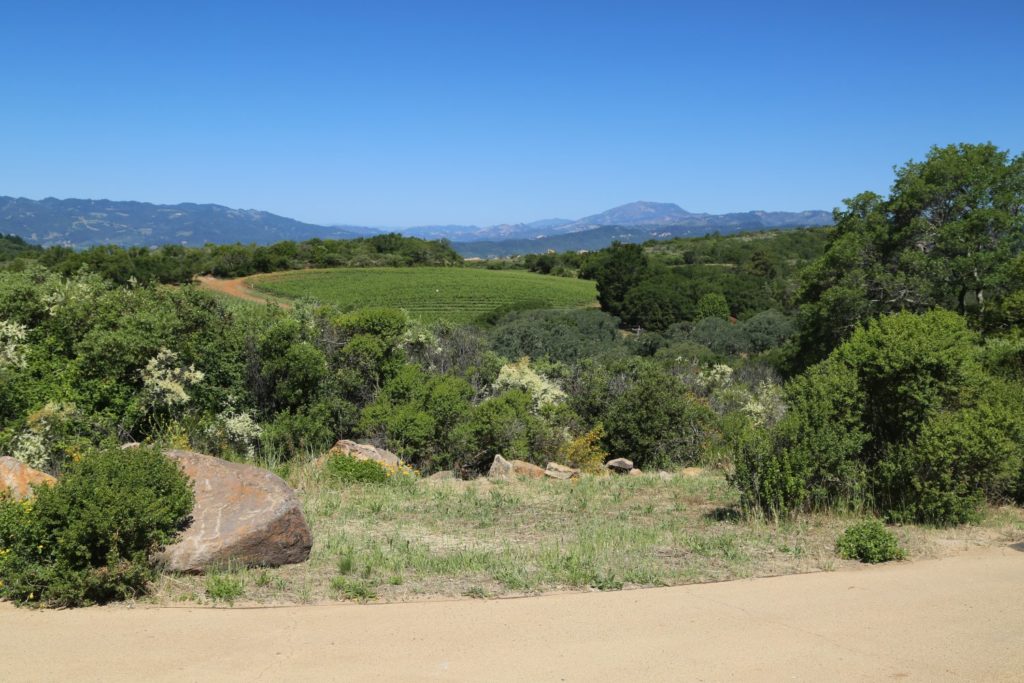
Leave a Reply